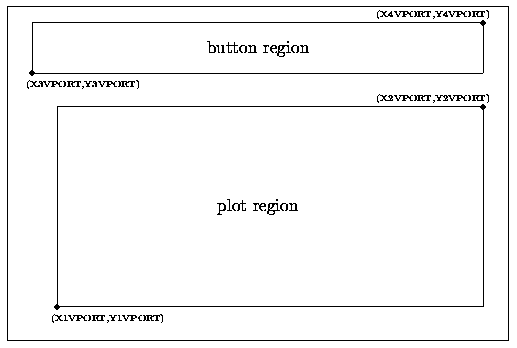Library description
Plotting settings
The appearance of buttons and plots using Button depend on the values of a
set of environment variables (all of them declared in the file button.inc).
These variables govern the size and location of buttons and plots, and can be
changed at running time in a straightforward way by performing calls to
subroutines.
The following table shows a list of the environment variables, together with a
short description, their defaults values (established in the initial call to
the routine RPGBEGIN), and the routines employed to query and set their
current values.

A sample program
The sample program samplebutton.f, included in the distribution file, shows
some of the capabilities of the Button library. Note that this program also
incorporates an algorithm to handle, simultaneously, different graphic output
devices. However, it is important to note that, if more than one single graphic
device is going to be employed, buttons (in this sample program) will only be
displayed in the first selected graphic device.
Buttons can be employed graphically or in text mode.

